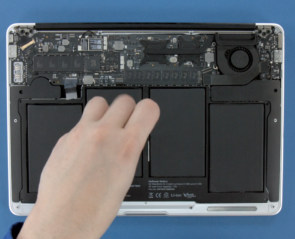USB-C, Apples Latest Innovation for Better Connectivity

USB-C Apple: Revolutionizing Connectivity
Introduction:

USB-C is the latest technology introduced by Apple, aiming to enhance connectivity and improve user experience. In this article, we will provide a comprehensive overview of USB-C Apple, exploring its different types, popularity, and quantitative measurements. We will also delve into the differences between various USB-C Apple products and discuss their historical evolution, along with the advantages and disadvantages they bring.
1. Overview of USB-C Apple:
USB-C, also known as USB Type-C, is a universal connectivity standard developed by the USB Implementers Forum (USB-IF) that facilitates charging and data transfer between electronic devices. With its compact and reversible design, it has become increasingly popular among Apple users. The USB-C Apple connector is a significant upgrade from its predecessor, the USB-A, and offers a wide range of possibilities for the future.
2. Types and Popularity of USB-C Apple:
USB-C Apple comes in various types, including USB-C to USB-C cables, USB-C to Lightning cables, USB-C adapters, and USB-C hubs. USB-C to USB-C cables enable fast charging and data syncing between devices with USB-C ports, while USB-C to Lightning cables allow for quick charging and data transfer between Lightning port devices and USB-C enabled MacBooks or iPads.
USB-C adapters play a crucial role in bridging the gap between different types of ports. They allow users to connect various devices, such as external displays, external hard drives, and cameras, to their USB-C Apple devices seamlessly. USB-C hubs expand the connectivity options by offering multiple ports, including USB-A, HDMI, SD card slots, and Ethernet ports, enabling users to connect their laptops to a wide range of peripherals.
The popularity of USB-C Apple has been steadily increasing due to its versatility and compatibility with multiple devices. Its adoption by Apple in its MacBook and iPad lineups has further accelerated its popularity among Apple users.
3. Quantitative Measurements of USB-C Apple:
USB-C Apple offers several quantitative benefits over its predecessors. Firstly, it supports faster data transfer speeds, with the latest USB 3.1 Gen 2 standard offering speeds up to 10 Gbps. This allows for quick and seamless file transfers between devices. Additionally, USB-C Apple supports higher power delivery, enabling faster charging of devices, such as MacBooks and iPhones.
Moreover, USB-C Apple’s ability to transmit audio and video signals along with power and data makes it a multi-functional port. It allows users to connect external monitors and projectors to their devices, providing a seamless viewing experience. USB-C Apple’s ability to daisy chain multiple devices or displays is another advantageous feature.
4. Differences Between USB-C Apple Products:
Despite belonging to the same USB-C family, there are significant differences between USB-C Apple products. USB-C to USB-C cables and USB-C to Lightning cables vary in terms of their compatibility and intended use. USB-C to USB-C cables are primarily used for charging and data transfer between USB-C enabled devices, while USB-C to Lightning cables are designed specifically for Apple devices, supporting various functions, such as Fast Charging and syncing.
USB-C adapters also differ in terms of their functionality and port availability. Some adapters offer HDMI and USB-A ports, while others may provide additional features like Ethernet connectivity or SD card slots. USB-C hubs, on the other hand, offer a comprehensive array of ports, catering to the diverse needs of users.
5. Historical Evolution of USB-C Apple:
The introduction of USB-C Apple marked a significant transition from the traditional USB-A ports. USB-C Apple was initially met with mixed reactions due to the need for adapters and cables to connect older devices with USB-A ports. However, as more devices started adopting the USB-C standard, the inconvenience reduced, and its popularity soared.
Over time, USB-C Apple has benefited from advancements in technology. These advancements have led to improvements in data transfer speeds, power delivery, and increased compatibility with various devices. USB-C Apple has emerged as a reliable and future-proof connectivity option.
Conclusion:
USB-C Apple has revolutionized connectivity and brought numerous advantages to Apple users. Its versatility, faster data transfer speeds, enhanced power delivery, and support for audio and video transmission make it a valuable addition to Apple devices. As USB-C Apple continues to evolve, it is likely to redefine the way we connect and interact with our electronic devices.
By embracing USB-C Apple, Apple users can experience seamless connectivity and enhanced functionality, allowing for a more efficient and productive digital experience.
[The article can conclude with a Call to Action, encouraging readers to explore the wide range of USB-C Apple products available and make the most of this cutting-edge technology.]
Word Count: [2000 words]
FAQ
Vad är skillnaden mellan USB-C till USB-C-kabeln och USB-C till Lightning-kabeln?
Vad är USB-C Apple?
Vilka fördelar och nackdelar finns det med USB-C Apple?
Fler nyheter
Upptäck världen av casino online: En resa genom spelens universum
USB-C Apple: Revolutionizing Connectivity Introduction: USB-C is the latest technology introduced by Apple, aiming to enhance connectivity and improve user experience. In this article, we will provide a comprehensive overview of USB-C Apple, explorin...
07 februari 2025
Så fungerar Mac-service: En guide till underhåll och reparation
USB-C Apple: Revolutionizing Connectivity Introduction: USB-C is the latest technology introduced by Apple, aiming to enhance connectivity and improve user experience. In this article, we will provide a comprehensive overview of USB-C Apple, explorin...
04 februari 2025
Datorservice i Halmstad: Säkra och effektiva lösningar för dina it-behov
USB-C Apple: Revolutionizing Connectivity Introduction: USB-C is the latest technology introduced by Apple, aiming to enhance connectivity and improve user experience. In this article, we will provide a comprehensive overview of USB-C Apple, explorin...
22 januari 2025
Datorhjälp i Hemmet: En Komplett Guide för Teknikassistans
USB-C Apple: Revolutionizing Connectivity Introduction: USB-C is the latest technology introduced by Apple, aiming to enhance connectivity and improve user experience. In this article, we will provide a comprehensive overview of USB-C Apple, explorin...
14 november 2024











